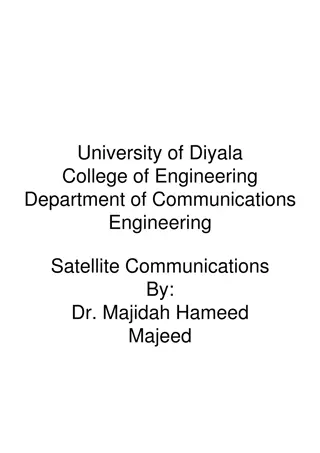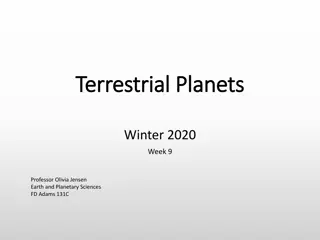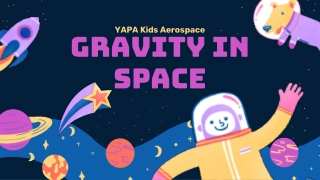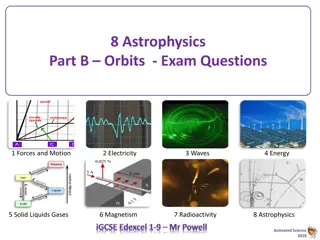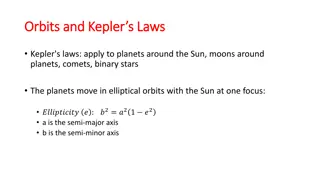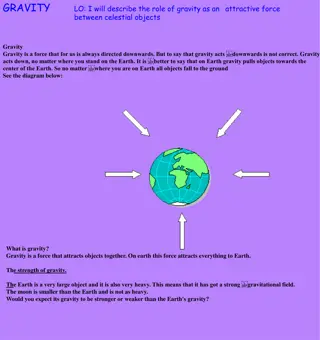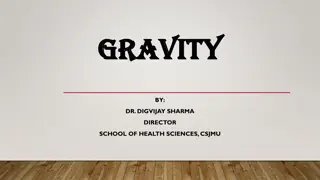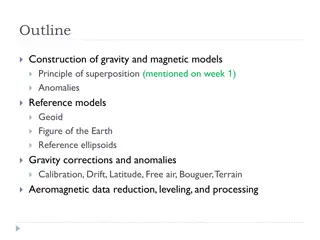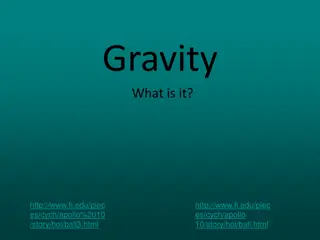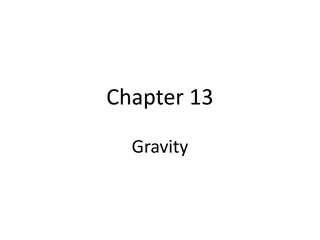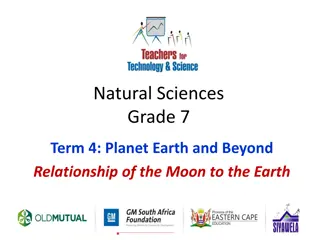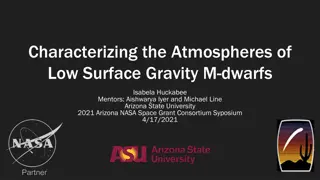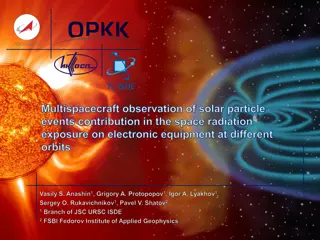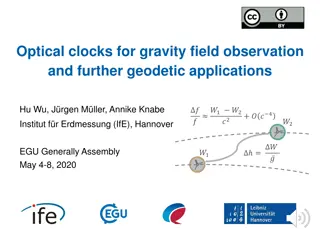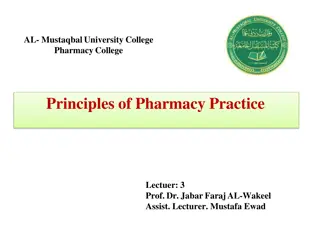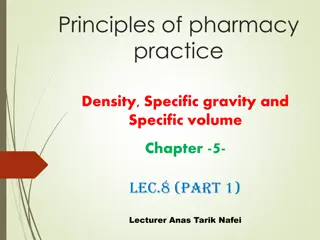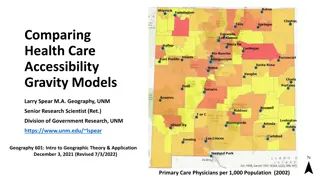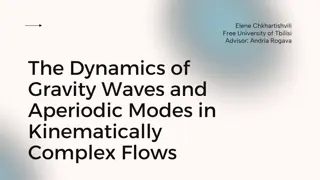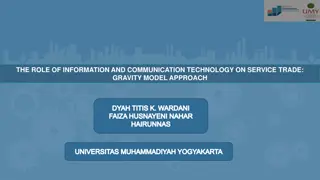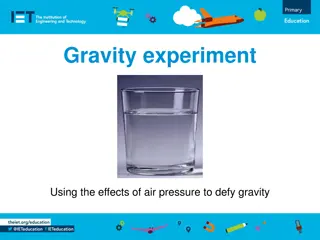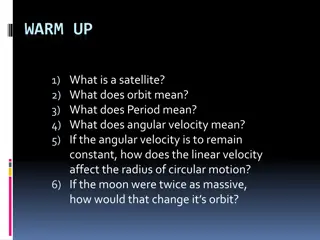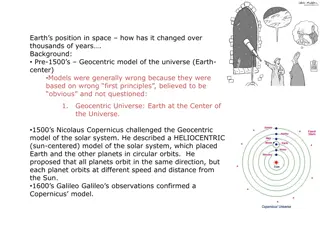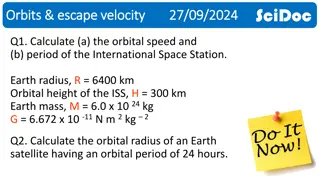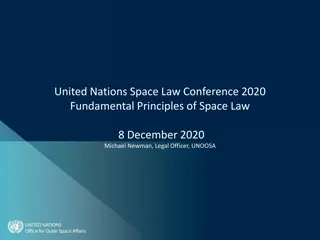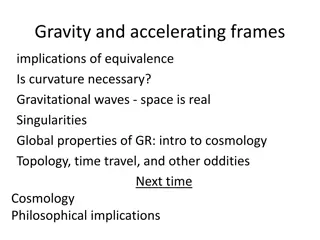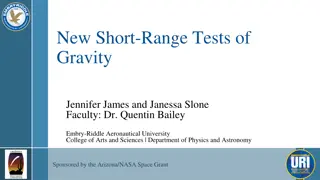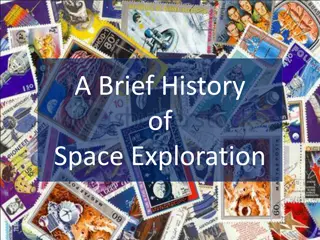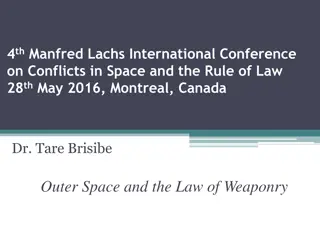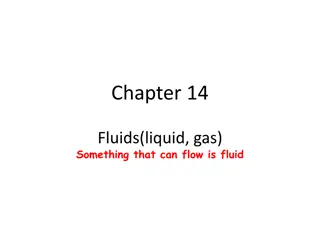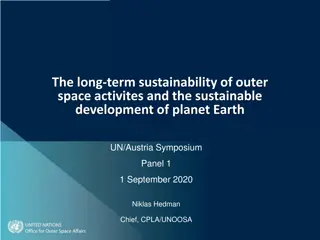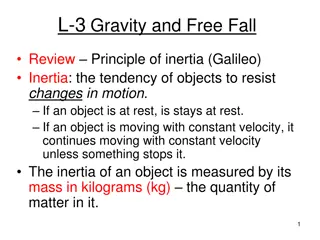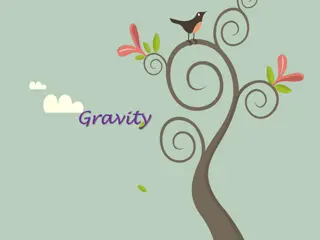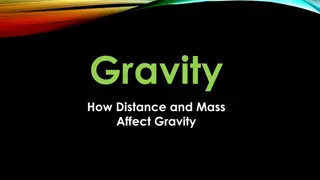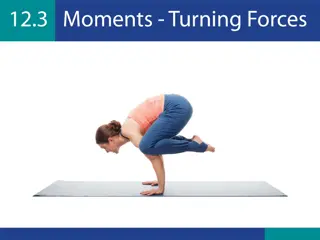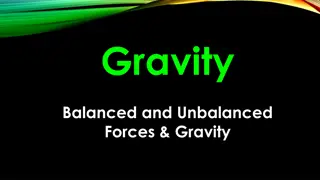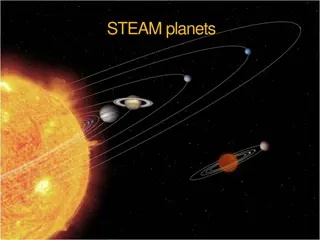Understanding Orbits and Gravity in Space
Explore the concept of orbits and gravity in space by following the trajectory of a satellite above Earth. Learn how gravity keeps the satellite in a perpetual state of orbit, moving at a constant speed parallel to the ground due to the Earth's round shape. Discover how varying speeds affect orbit stability and find an orbit simulator to visualize different types of orbits.
Download Presentation

Please find below an Image/Link to download the presentation.
The content on the website is provided AS IS for your information and personal use only. It may not be sold, licensed, or shared on other websites without obtaining consent from the author. Download presentation by click this link. If you encounter any issues during the download, it is possible that the publisher has removed the file from their server.
E N D
Presentation Transcript
Orbits Written by David Ilsley Image: commons.wikimedia.org
Imagine a satellite 200 km above the ground. Imagine it s moving horizontally at 7.8 km/s. The Earth s gravity pulls it towards the earth so its trajectory starts to head downwards.
If the Earth were flat, it would eventually hit the ground. But the Earth isn t flat, it is round. So as the satellite falls downwards, the surface of the Earth drops down by the same amount.
So the satellite keeps going, staying 200 km above the ground. The next part of its flight will be likewise and in fact the satellite will never get any closer to the ground. So it ends up going right around the Earth, coming back to where it started. Then it goes round again, and again, and . . . It is in orbit. Image: flickr.com
As it moves, the only force acting on it is gravity. The satellite is always moving parallel to the ground and gravity always pulls perpendicular to the ground, therefore at right angles to the direction of movement.
If gravity pulled forwards it would cause the satellite to speed up. If it pulled backwards it would cause it to slow down. But it does neither, so the speed of the satellite stays at 7.8 km/s.
If the satellite started off going more slowly, say 6 km/s, it wouldnt get as far before gravity pulled it down and it would eventually hit the ground. If it started off faster, say 9 km/s, it would go too far and end up moving further from the earth. To orbit at a constant 200 km from the ground, a satellite going around the Earth has to move at 7.8 km/s.
There is an orbit simulator at http://phet.colorado.edu/sims/html/gravity-and-orbits/latest/gravity-and- orbits_en.html
On Phet, we can see three types of orbit: Circular (the shape of a circle) Elliptical (the shape of an ellipse) Hyperbolic (the shape of a hyperbola)
Planets have elliptical orbits around the sun, though the ellipses are almost circles (only very slightly longer than wide). We say that a circle has an eccentricity of 0. Ellipses have eccentricities between 0 and 1 (near 0 for nearly circular ellipses, near 1 for vey long thin ellipses) Hyperbolas have eccentricities greater than 1. A shape with eccentricity exactly 1 is called a parabola. It is an infinitely long ellipse. Though the chance of an orbit having eccentricity exactly 1 is negligible, as is the chance of an orbit having an eccentricity of exactly 0. So orbits can be circular, elliptical, parabolic or hyperbolic, but in reality all orbits are elliptical or hyperbolic.
Objects in circular and elliptical orbits keep going round and round at regular intervals. Planets and periodic comets have orbits of these kinds. Objects in parabolic and hyperbolic orbits come past the body they are orbiting only once. Then they head back into outer space, their path getting straighter and straighter as they get further away. Comets and asteroids from outside the solar system have orbits of this type.
Nothing to do with orbits, but . . . Circles, ellipses, parabolas and hyperbolas are called conic sections because they are produced by cutting a cone in different directions. Because the beam of light from a torch is a cone, you can get the same shapes by shining a torch onto a wall. Image: m1maths.com A6-6
We have looked at orbits of a smaller body around a larger body. An example might be the orbit of Jupiter around the Sun. But gravity works both ways. Just as Jupiter is pulled by the Sun, the Sun is pulled by Jupiter. In fact Jupiter exerts as much force on the Sun as the Sun does on Jupiter. The force on both bodies is given by ??1?2 ? = ?2 where F is the force in Newtons, m1 and m2 are the masses of the two bodies in kilograms and G is the gravitational constant, 6.7 x 10 11.
So just as Jupiter moves in a circle (ellipse) around the Sun, the Sun moves in a circle (though a very much smaller circle around Jupiter. In fact, both move around their common centre of mass which lies near the Sun, but not inside it. Image: commons.wikimedia.org
Even though Jupiter exerts the same force on the Sun as the Sun does on Jupiter, clearly Jupiter moves much more than the Sun. This is because the Sun is much more massive than Jupiter. Give a small child a push and she ll probably fall over. Give a 150 kg adult the same push and they ll hardly move. Give a 40 tonne truck the same push and you won t even notice the movement. So, even though the force on the Sun and the force on Jupiter are the same, Jupiter moves much more than the sun. Mathematically, a = ? ? Where a is the acceleration of a body, F is the force applied to it and m is its mass. Image: pxhere.com
If two bodies about the same mass orbit each other, both orbit around a point about half way between them. This often happens with double stars. Image: commons.wikimedia.org
So far, weve looked at systems with two bodies. Let s look at the Sun-Earth-Moon system, a three-body system. PhET will allow us to do this. They form a stable orbit which repeats indefinitely. But this is only because the distance between two of those bodies is very much less than the distance of those to the other one. If that s not the case, the orbit will generally be unstable, never repeating and will usually result in either two of the bodies colliding or one being ejected. We can see this on PhET by placing the moon further from the Earth.
You will probably be aware that planets further from the Sun orbit more slowly. Also, having further to go, they take much longer to go around. Mercury orbits the Sun in 88 days, Pluto takes 248 years. We can see this on PhET too by moving the Earth closer to and further from the Sun.
Also, looking at PhET will show that for an elliptical orbit with high eccentricity, like a comet orbiting the Sun, the comet gets very much faster as it gets closer to the Sun. This is because the comet has kinetic energy (from its movement) and gravitational potential energy (from its position in the gravitational field of the Sun). We have to give a comet potential energy to pull it further away from the Sun, just like it requires energy to lift a bag of cement further from the Earth. So the further the comet is from the Sun, the more potential energy it has. When the comet comes closer to the Sun, it loses some of that potential energy. But it doesn t just disappear. Energy can t be created or destroyed. Instead, it gets converted to kinetic energy and so it moves faster. We see the same thing happening if we drop an apple on someone s head.
Johannes Kepler was the first person to work out the orbits of the planets. He worked for the Danish astronomer Tycho Brahe who had a brass nose because he lost his other one in a duel. Tycho had spent years keeping very accurate records of the positions of the planets in the sky. Tycho was very jealous of his data and wouldn t let Kepler see it. But in 1601, Tycho held a party (he was rich and a bit of a party animal). During the party he needed to go and have a leak, but, to be a good host, he held on until after the party had finished, by which time he was quite desperate. Three days later he died, many think because he waited too long before going to the toilet. Anyway, once he was dead, Kepler could help himself to Taycho s data. And he did.
Now Johannes was a good mathematician and managed to work out from the data that: 1. The planets orbit the Sun in ellipses 2. The planets move faster as they get closer to the Sun and in fact swept out equal areas in equal times. 3. The square of the period (time for one orbit) divided by the cube of the length of the ellipse was the same for all planets. These are called Kepler s Laws. Image: flickr.com
Kepler worked these things out, but couldnt work out why. This had to wait for Isaac Newton. Newton had to leave Cambridge University in 1665 because of the bubonic plague. He went home to Lincolnshire. There, he came up with the laws of motion: 1. a body will continue at rest or moving with constant velocity unless acted upon by a force 2. the rate of change of velocity is equal to the force divided by the mass: a = ? ? 3. every action has an equal and opposite reaction Before then it was believed that a force had to be applied to keep a body moving.
After that, as the story goes, while sitting under an apple tree, an apple fell on his head and he came up with his theory of gravity. Image: commons.wikimedia.org Before this time it was believed that everything tended to find its natural place, earth and water lower down, air and fire further up. Newton replaced this with the idea that every body attracted every other body according to the formula ??1?2 ? = ?2 He used this law to explain Kepler s three laws, though to do so, he had to invent calculus. He did all this by himself in a couple of years at the age of about 22.
Orbits of planets etc. do vary a little bit over time. Their eccentricity tends to decrease making the orbit more circular The long axis of the ellipse tends to change direction. This is called precession. The reason for these things are complicated, but have to do with the fact that the bodies involved are not points in space or perfect spheres. Warping of space-time as described by general relativity has an effect too, particularly in high gravitational fields, like close to the Sun. In fact one of the main observations supporting the veracity of general relativity was that it correctly predicted the precession of Mercury s orbit around the Sun, something that had been observed, but not explained.
Another consequence of orbiting bodies not being points in space is tidal forces. The Earth and Moon orbit each other. But the gravitational pull of the Moon is greater on the Moon-side of the Earth than on the other side. This results in the Earth being stretched in the direction of the Moon. As the Earth rotates, the stretching is in different directions relative to the ground, so the Earth tends to change shape. The solid Earth changes shape a little, but the liquid ocean changes shape a lot more. Hence the tides. This is why this effect is known as tidal force. Image: commons.wikimedia.org
As the Earth rotates, the bulges take a while to re-adjust, with the effect that the bulges are always a bit ahead of the moon like this: Please excuse the Dutch. This tends to slow down the rotation of the Earth and speed up the orbit of the moon. Thus, over the history of the Earth, the day length has increased from about 6 hours to 24 hours and the Moon has moved about 15 times as far away. Image: commons.wikimedia.org
Thats about it for natural orbits. Now we ll have a quick look at the orbits of space crafts within the solar system. Image: en.wikipedia.org
Some, like the Hubble Space Telescope are in steady, nearly circular orbits around the Earth. Others, like the James Webb Space Telescope are in steady orbits around the Sun. There are five Lagrange points around the Earth where the gravitational pulls of the Sun and the Earth combine to produce a stable orbit around the Sun. The JWST is at L2. Image: commons.wikimedia.org
The Lagrange points are places where the gravitational potential (taking centrifugal force into account) is not changing. Don t worry about understanding that: just look at the pretty picture. Image: commons.wikimedia.org
Other space craft like Voyager 1 and 2 and New Horizons, which explored the outer solar system, are not in repeating orbits, but on one-way journeys. It takes a lot of energy (and hence fuel) to get a space craft out of the Earth s and Sun s gravitational fields and to speed it up enough to make the journey to the outer solar system in a reasonable time. They generally use gravitational assists . This involves flying close to a planet like Jupiter and using it to get a free sling-shot effect. Image: picryl.com
The space craft is steered to perform a parabolic orbit around Jupiter. The results in it approaching the planet at speed v, then whipping round to leave it in the same direction at the same speed. If, however, the planet is moving towards the spacecraft at speed U as the space craft approaches, then the spacecraft will get a boost in its speed without using any fuel. Image: commons.wikimedia.org
Actually, the fastest a space craft has ever flown is the Parker Solar Probe which flew very close to the Sun to check out its atmosphere. As it approached the Sun, a lot of gravitational potential energy was converted to kinetic energy and its speed reached 192 km/s. Image: commons.wikimedia.org
To plan the trajectory (path) of a space craft to another part of the solar system, it is necessary to take account of the gravitational effects of the Sun and all the planets, and maybe even their moons. This is a complicated business, but it is all done with the help of computers. The trajectories of the Apollo crafts to the Moon, on the other hand were worked out by hand. Three African-American women at NASA -- Katherine Johnson, Dorothy Vaughan and Mary Jackson did the maths for these and did it perfectly. The movie, Hidden Figures, is about this. Image: flickr.com
The End Image: en.wikipedia.org


